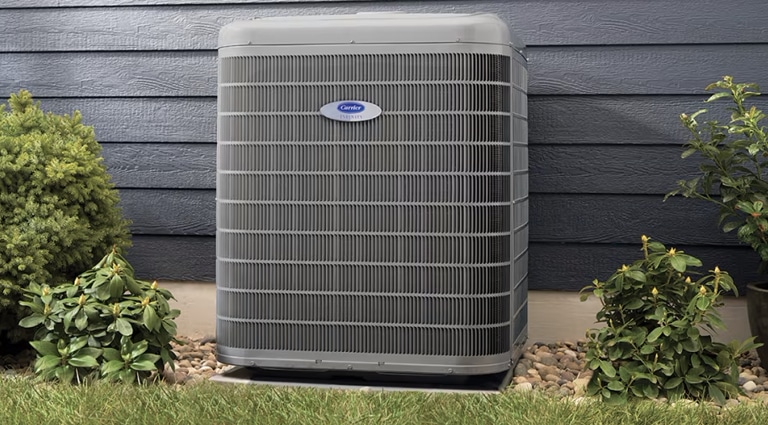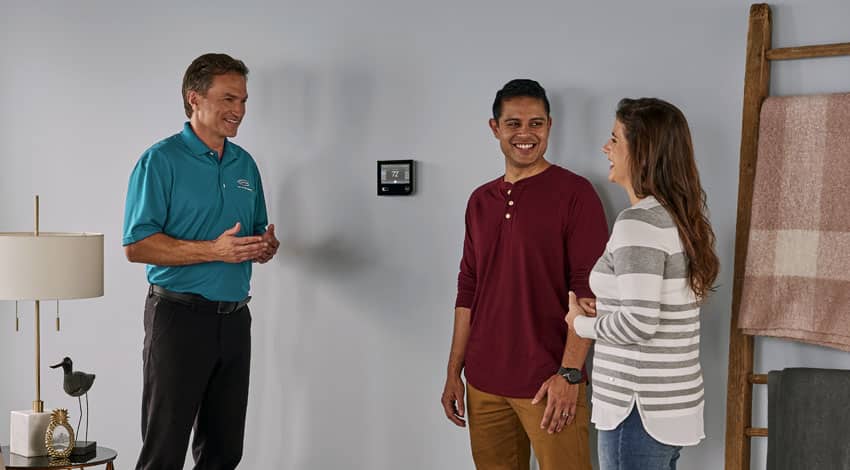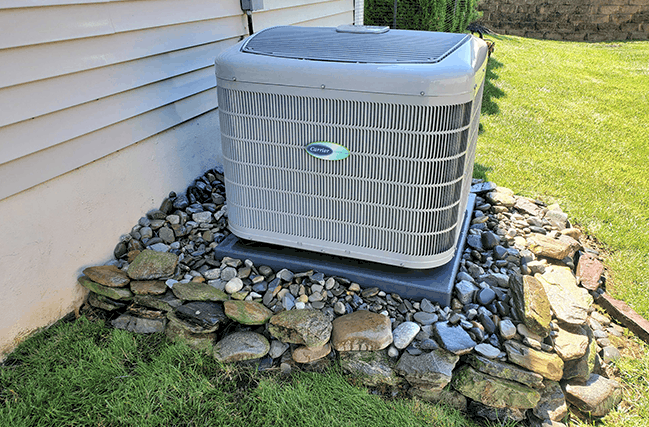
When the temperature rises, don’t be caught simmering in the hot summer heat! The last thing you want on the first really hot day of summer is to find your central air conditioner doesn’t work. But, this can be the case if you don’t do a bit of quick annual maintenance before summer arrives. Spring is the perfect time in Central New Jersey to get your air conditioner ready for summer.
A central air conditioner utilizes an indoor air handler and an outdoor compressor. The condenser unit is typically located outdoors. This is the portion of your air conditioning unit that you’ll want to clean and maintain. Your air conditioner has been sitting idle during the cold winter months collecting leaves and other debris. Replacing the filters, cleaning the condenser, and performing a few minor checks will get your AC unit into shape so it’s ready to operate and cool your home efficiently this summer.
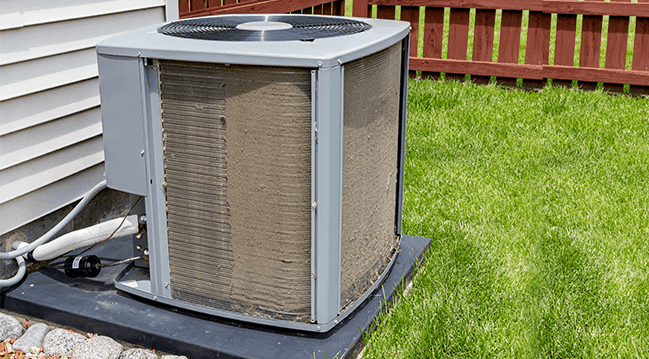
1. Safety First
Turn off the circuit breaker before working on your air conditioning system. Be sure to turn off the power to the condenser at the service panel before working on your air conditioner unit. The condenser also typically has a 240-volt weatherproof disconnect box located near the unit. This contains a lever, fuses, or a circuit breaker to shut off the condenser. Be sure to turn this off as well.
2. Clean or Replace the Filters
Clean or replace your furnace or air-handler filters whenever they begin to look clogged with dust. Or, at least twice a year. Not changing these filters will restrict airflow and reduce the efficiency of your air conditioning unit. Dust filters also recirculate dust into your home. A clogged filter can cause a full system shutdown.
3. Clean the Air Conditioner’s Condenser Coils
Clean your air conditioning unit’s condenser coils and fan of debris. A central air conditioner’s condenser unit, typically located outdoors. It is a large fan in a metal box with sides that look like grilles. If your condenser unit was covered during the winter, uncover it. In this case, there’s likely not much debris to clear away. If it wasn’t covered, you’ll likely need to clear away a larger accumulation of leaves, yard debris, and dirt. Air moves across radiator-style condenser coils, so you would want those clean. Check to see if debris has clogged the coils. If so, these coils need to be cleaned with soft pressure and cleaner so your condenser unit works at its highest efficiency. Be careful not to bend the delicate fins or damage the coils.
4. Clean and Drain
If your air conditioning unit has a drain, make sure the drain is clear. Clean the blower’s fan blades using a vacuum or a rag. Clean up any excess water inside the unit.
5. Check the Coolant Lines
Refrigerant tubes or pipes run from your air conditioner’s evaporator on the air handler to the condenser outside. These lines are usually covered with a foam coolant line insulation. Check to see if there are areas where the insulation is frayed or missing. If so, replace it with new foam insulation sleeves.
6. Test the Unit
Test your newly cleaned air conditioning unit after allowing the unit to dry thoroughly. You’ll need to turn the power back on to your condenser unit.
Wrapping Up
Air conditioners require regular maintenance. If you’re using a system that runs through multiple rooms of your home, it’s especially important to keep it in tip-top shape for the Summer heat. You can also check more guides for AC maintenance on our blog.
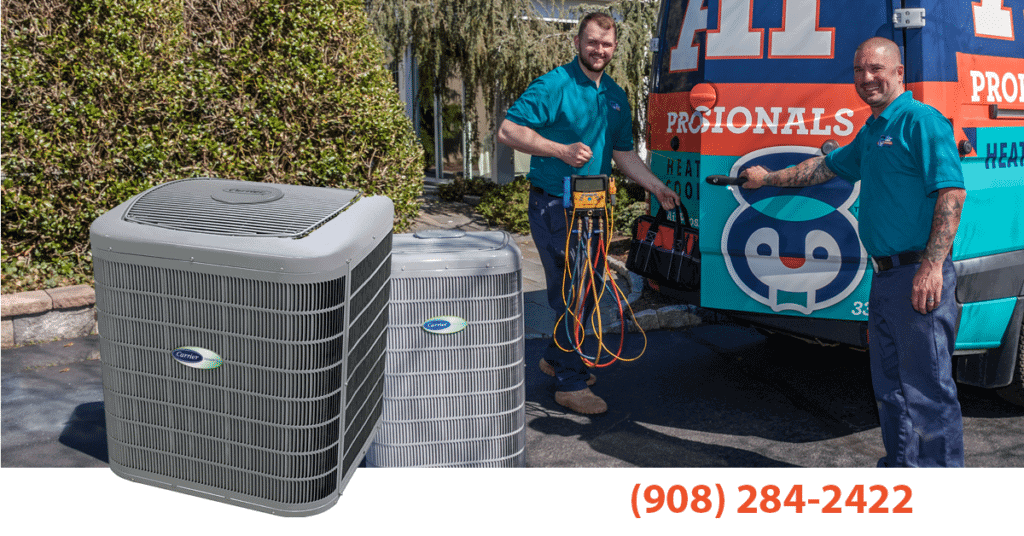
Please note: The air handler or furnace blower blows the resulting chilled and dehumidified air through ductwork to the home’s rooms. Repairing your central air conditioner’s sealed refrigeration system is not a do-it-yourself job. They should be handled by a technician from Air Professionals Heating & Air Conditioning.



